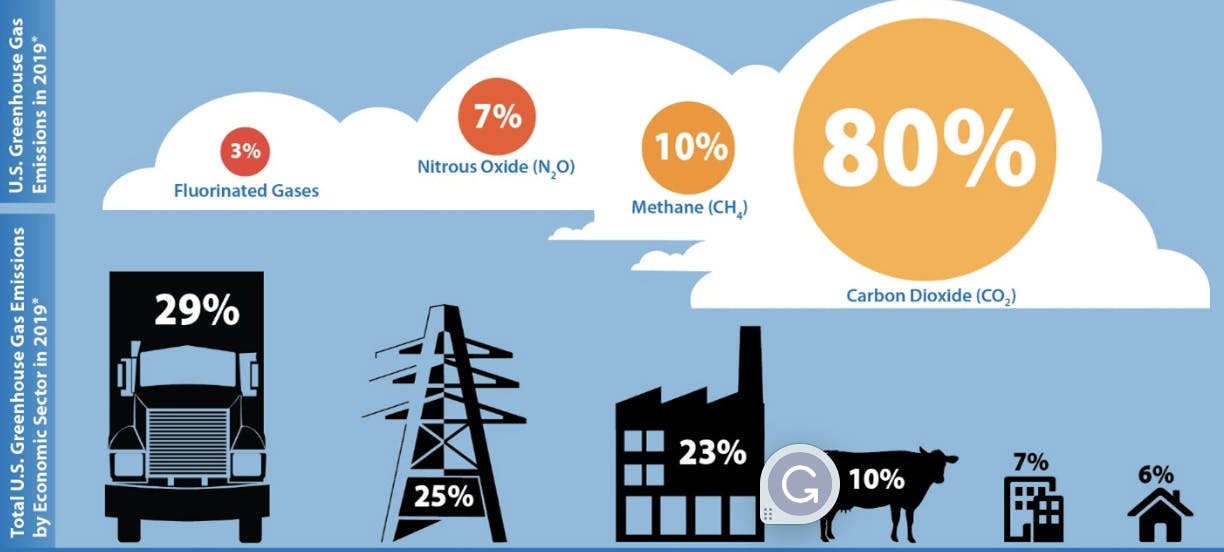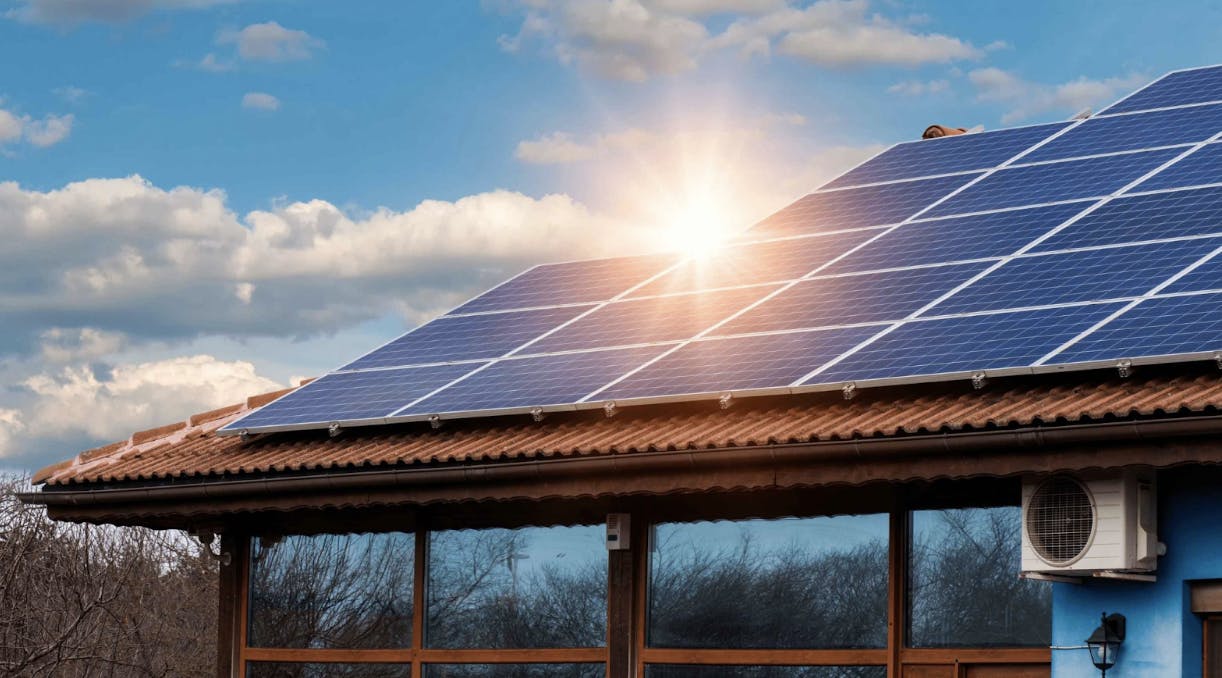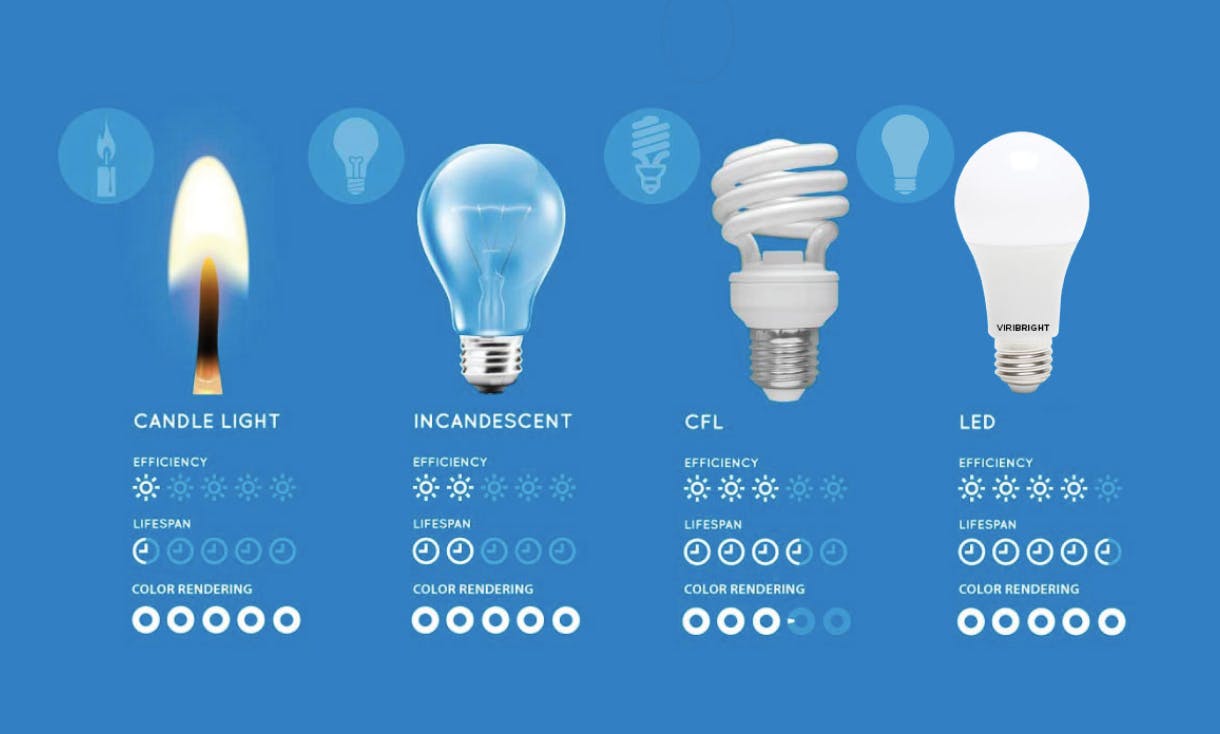TL;DR Science: Reducing Greenhouse Gas Emissions
By Angelo C.
June 24, 2022 · 4 minute read
Biology
Earth Science
Space Science
Environmental Science
Greenhouse gases have long been a topic of concern, and it is imperative that we address the ongoing climate crisis before it is too late. Before discussing how we can reduce greenhouse gas emissions, it is important to understand the science behind the greenhouse effect and each of the greenhouse gases themselves. You can learn more about that in parts one and two of this 3-part series on the greenhouse effect and greenhouse gases!
Because there are so many greenhouse gases and so many sources of greenhouse gas emissions, we will not be diving deep into the details of all of them, but I’d like to introduce you to some of the most popular and impactful ways you can decrease greenhouse gas emissions. Of course if any of these interest you especially, feel free to research more in depth on your own!
Electric Vehicles

Transportation makes up the largest portion of many countries’ greenhouse gas emissions. In fact, because of the Covid-19 pandemic, carbon emissions in many countries dipped down due to the decrease in transportation as they locked down.
One of the most popular ways to decrease carbon emissions is by switching to electric vehicles. These are automobiles that do not burn unsustainable fossil fuels, but instead run on renewable electricity to run their engines. You may believe that individual people switching to electric vehicles may be ineffective, but carbon emissions from passenger cars actually made up the largest percentage of the transportation emissions in 2021. For more information, check out our article on electric vehicles here!
Some are skeptical to switch to electric vehicles because they aren’t sure if they are actually greener than conventional cars after considering the energy it takes to create electricity to begin with. However, many sources including the U.S. EPA, New York Times, and Forbes have done detailed research into this and all agree that electric cars are significantly greener than conventional cars, even after considering the cost of producing electricity.
Solar Panels

Solar has long been known as one of the most sustainable sources of renewable energy; after all, the Sun isn’t going to disappear any time soon. For this reason, many residential areas have been switching to solar energy to power their homes. Most houses use electricity as their primary source of energy, but, while electricity is renewable, the energy used to create that electricity frequently comes from fossil fuels. For this reason, solar is still considered more environmentally friendly.
In areas where solar energy is practical (being those that receive large amounts of sunlight year-round), switching to solar can reduce household greenhouse gas emissions by up to 80%. Considering electricity and heat production makes up one of the biggest sectors of the world’s greenhouse gas emissions, switching to solar will directly contribute to reducing emissions and climate change. If you’re wondering about the details of solar panels and how they work, check out our article on solar panels here!
Light Bulbs

Perhaps one of the easiest ways to cut down on energy use and thus, greenhouse gas emissions, is to phase out the use of incandescent light bulbs. These lightbulbs use heated wire filaments to emit light. However, these bulbs are very inefficient—only about 5% of the energy used is converted into light; the other 95% is lost as heat.
There are many alternatives to incandescent light bulbs: compact fluorescent lamps (CFLs) and light emitting diodes (LEDs) are the most popular. These are both less harmful to the environment, and less expensive to maintain as well. One thing to note is that CFLs do contain trace amounts of mercury which can pollute the environment, but they still release less overall mercury than incandescent light bulbs after considering the reduction in power plant emissions.
Changing light bulbs may seem like a very minor change, but given the number of buildings and bulbs required to light those buildings, a shift away from incandescent bulbs can vastly reduce the amount of energy needed for electricity, reducing the number of power plant emissions. If every household replaces one incandescent bulb with a more energy efficient bulb, the net greenhouse gas emission reduction would be equivalent to removing 6.3 million cars from the roads.
TL;DR:
Greenhouse gas emissions are at an alarming high, and a reduction in these emissions is crucial for the longevity of this planet. Three ways that individual people can contribute to reductions in greenhouse gas emissions are by switching to electric vehicles, using solar panels, and phasing out incandescent light bulbs for more energy efficient alternatives.
Sources
https://www.epa.gov/ghgemissions/sources-greenhouse-gas-emissions
https://www.erg.com/project/improving-us-greenhouse-gas-emissions-inventory
https://www.statista.com/statistics/1185535/transport-carbon-dioxide-emissions-breakdown/
https://www.epa.gov/ghgemissions/sources-greenhouse-gas-emissions
https://www.epa.gov/greenvehicles/electric-vehicle-myths
https://www.nytimes.com/2021/03/02/climate/electric-vehicles-environment.html
https://www.eia.gov/energyexplained/electricity/electricity-in-the-us.php
https://nature.berkeley.edu/classes/es196/projects/2013final/ArifM_2013.pdf
https://www.nps.gov/pore/learn/nature/climatechange_action_home.htm
https://www.viribright.com/lumen-output-comparing-led-vs-cfl-vs-incandescent-wattage/
https://en.wikipedia.org/wiki/Incandescent_light_bulb
Image Sources
https://www.ucsusa.org/resources/car-emissions-global-warming
https://www.erg.com/project/improving-us-greenhouse-gas-emissions-inventory
https://powerproductionmanagement.com/residential
https://www.viribright.com/lumen-output-comparing-led-vs-cfl-vs-incandescent-wattage/
Did you enjoy this article?
About The Author
Angelo is currently a junior at Suncoast Community High School. He enjoys spending time with his dog, and playing volleyball and violin as hobbies. He also enjoys doing math, in and out of school. If you have any questions about this article, feel free to contact him at angelo@sciteens.org.